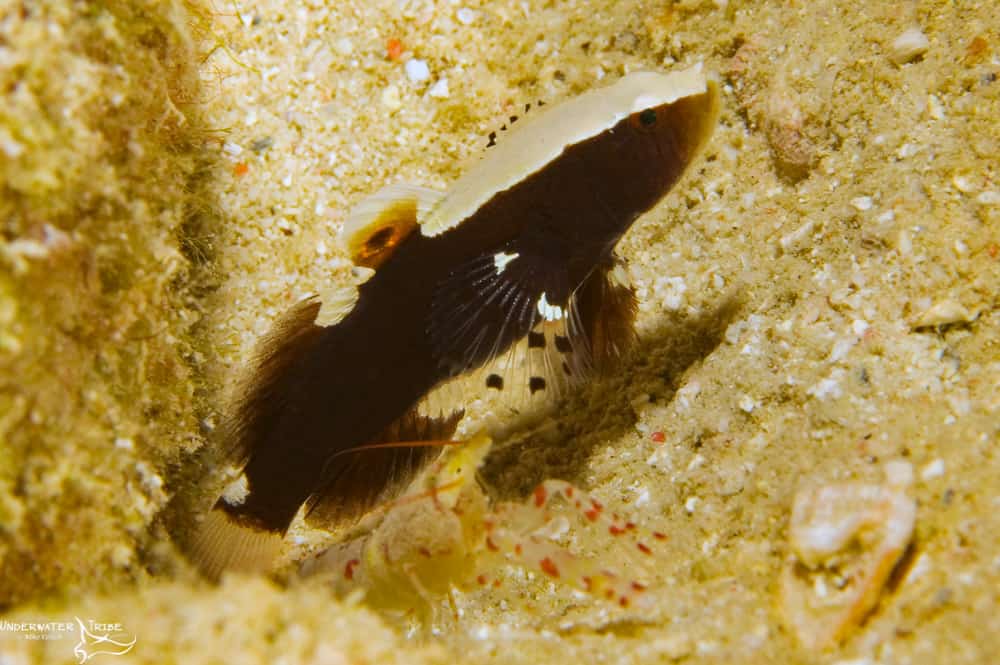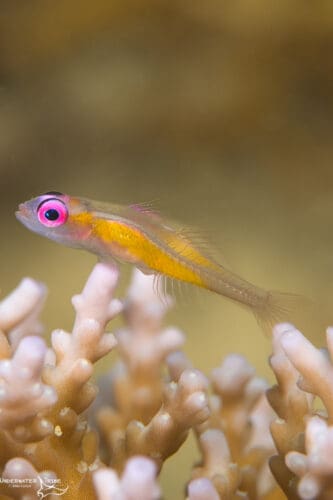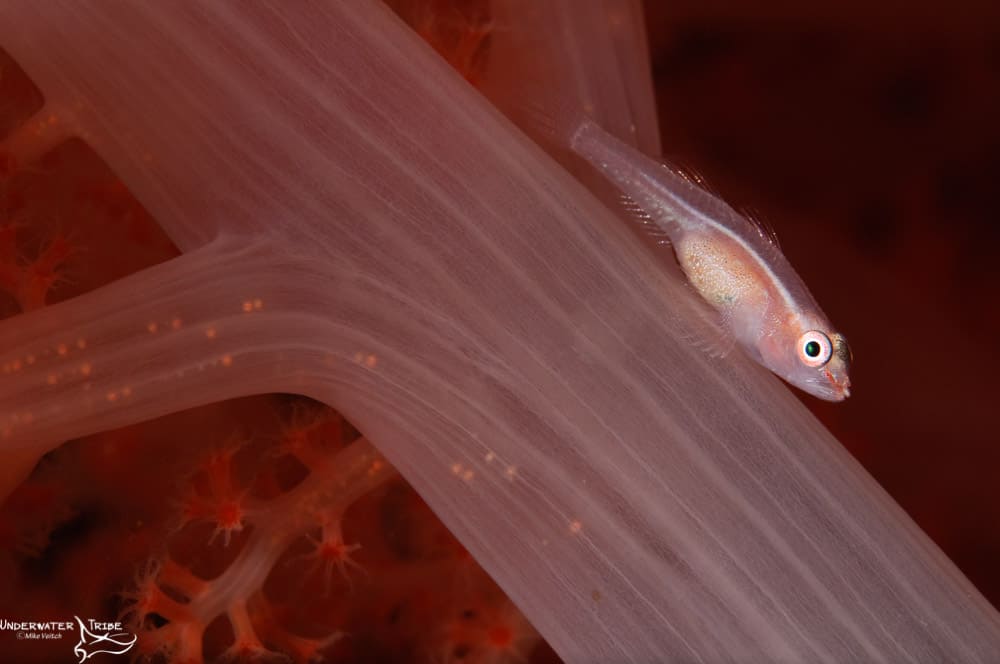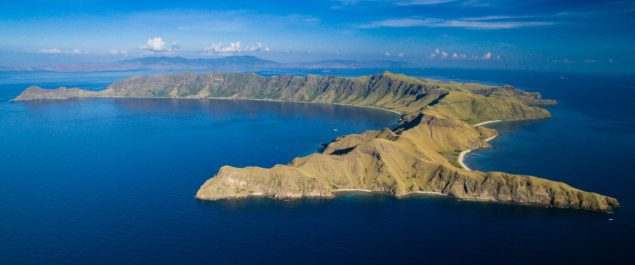Do you know which family of fish has more species than any other? Would you believe it’s the quiet and unassuming gobies? That’s right, there are more than 2000 species of goby world wide! They are one of the smaller groups of fish, with few species growing more than 20cm in length. The smallest gobies barely reach one centimeter in size and are considered one of the smallest fish in existence.

White Cap Goby and Shrimp
Although often found on or near the bottom, these wonderful fish can also be found living pretty much anywhere where there is water. In fact, gobies are found in both tropical and temperate waters and even in fresh water. There is even a species of goby that was introduced to the Great Lakes of North America and is thriving in this environment. The charismatic mudskippers are a type of goby that is considered amphibious as it spends much of its time on land. The Desert Goby is a genus of gobies that live in inland Australia in environments such as aquifers and super saline lakes.
Gobies in Indonesia
 In Indonesia we can find a large variety of gobies in all kinds of environments. Coral reefs, sand flats, mangroves, and even lakes are common spots to encounter these fish throughout the country. These wonderfully diverse fish come in a large variety of shapes and colors. These include drab colored brown one that blend into their environment as well as brilliantly colored ones that stand out like a neon light. One of our favorite sub families are the wonderful shrimp gobies. These “watch dog” fish live symbiotically with blind shrimp in a burrow on muddy and sandy bottoms. The gobies act as the guards while the shrimp take care of the housekeeping duties.
In Indonesia we can find a large variety of gobies in all kinds of environments. Coral reefs, sand flats, mangroves, and even lakes are common spots to encounter these fish throughout the country. These wonderfully diverse fish come in a large variety of shapes and colors. These include drab colored brown one that blend into their environment as well as brilliantly colored ones that stand out like a neon light. One of our favorite sub families are the wonderful shrimp gobies. These “watch dog” fish live symbiotically with blind shrimp in a burrow on muddy and sandy bottoms. The gobies act as the guards while the shrimp take care of the housekeeping duties.
 Not only are many gobies bright colored, they often boast intricate fins as well. The glorious sail fin goby looks like a miniature sail fish while Randalls goby has a brilliant looking top wing.
Not only are many gobies bright colored, they often boast intricate fins as well. The glorious sail fin goby looks like a miniature sail fish while Randalls goby has a brilliant looking top wing.
Although they often live in dark sand, the shrimp gobies are normally very colorful. Due to their stunning colour and appearance, gobies are highly sought after as photographic subjects. Macro photographers love searching for gobies in every environment. Watching them go about their feeding and other activities is quite entertaining. Several species of gobies also act as cleaner fish and will eat the parasite off of other fish.
Photographing Gobies
Photographing gobies is never an easy task. The vast majority are quite shy and constantly on alert. Due to their small size, they are always at risk from predators so will hide when divers get near. Therefore, it’s very important for photographers to move slowly and carefully when approaching a goby. It’s also important to ulitilize a longer lens on the camera. A lens such as a 90mm or 100mm is preferred as it allows a longer working distance. Don’t make any quick motions once you get close the goby.
One thing to keep in mind is not to tilt the camera forward to look a the photo when close to the fish. This will make the shy goby bolt back into it’s hole. If you want to check the photo for exposure, slowly back away first, then check and make adjustments before moving closer once again.

One thing to keep in mind when looking for gobies, it’s important to have a great dive guide. Our Underwater Tribe dive guides are very experienced with macro subjects. They know exactly where all the cool critters live and have an amazing eye for spotting. Bali is one of the top locations on the planet for gobies as Indonesia is home to such a large variety of fish. Please let us know if you have interest in these charismatic characters and we will be sure to find you some very special individuals.


